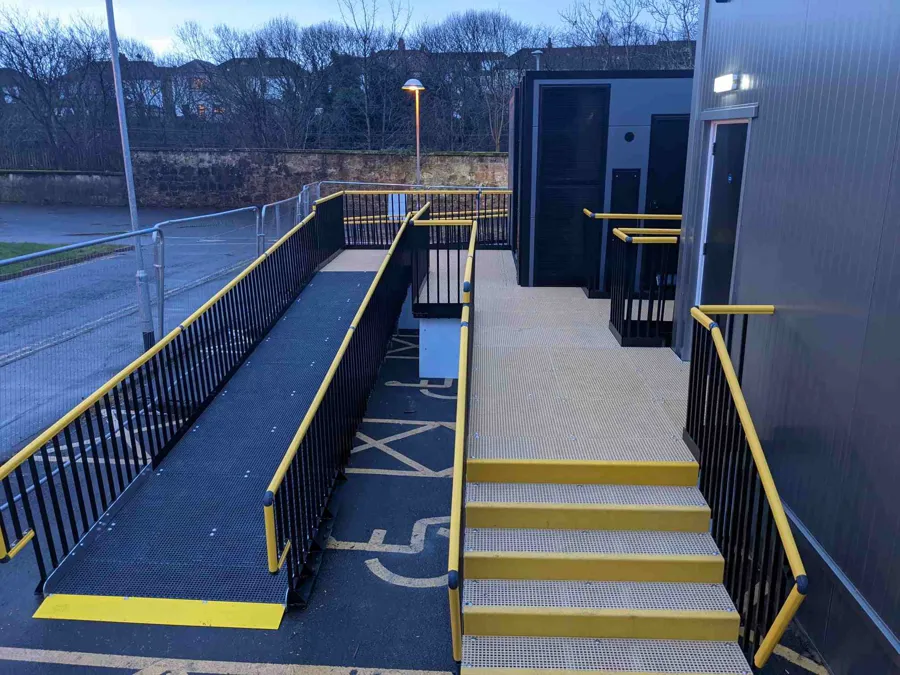
You are visiting the Canada Kee Safety website from United States. Would you like to go to the United States site?
In modern society, accessibility is not just a catchphrase. It is a testament to the progress we have made in being more inclusive of all individuals and to our understanding of how accessibility benefits everyone. For example, a wheelchair ramp not only helps people who use wheelchairs but also aids older adults, parents with young children, and others who are injured or have a temporary disability.
The enactment of the Accessible Canada Act (ACA) in 2019 demonstrates Canada’s commitment to accessibility and inclusiveness. It marks the culmination of standards and laws passed over the years by provinces, such as the Accessibility for Ontarians with Disabilities Act (AODA) in 2005. Federal and provincial action is not just a matter of convenience but a way to uphold fundamental human rights and dignity.

Accessibility can take many forms, such as sign language interpreters, service animals, and reserved seating on public transport. Mandates for buildings to be handicapped accessible are core to these efforts. Whether incorporated into the design of new structures or the retrofit of existing buildings, wheelchair ramps are a clear and effective means of compliance.
The ACA specifies seven (7) priority areas for the identification, removal, and prevention of barriers to establishing full accessibility, including four (4) that relate directly to making a building accessible:

Although great strides have been made to provide accessibility, many existing buildings still have stairs, steep elevations, and other barriers. A modular accessibility ramp is a fast and cost-effective way to enable building and business owners to install temporary or permanent ramps to comply with the ACA.
They incorporate lightweight aluminum alloy floor frames with fiberglass mesh for slip resistance, “warm-to-touch” PVC handrail tubes, and powder-coated steel balustrades. Ramps (and accompanying steps) are 48 inches (1219 mm) wide to provide sufficient freedom of movement for wheelchairs, strollers, and walkers. The ramps have a run of 11 inches (280 mm) and a rise of 6 inches (150 mm). Legs can be adjusted for uneven ground surfaces.
Configurations for straight ramps, L-ramps, T-ramps, return ramps, steps, ramps with steps or double-steps, and platforms can be used for a wide range of commercial, institutional, industrial, and retail facilities.
Customizable features include enlarged feet or concrete slabs for soft ground surfaces, safety gates for fall protection at the tops of steps, and floor frames with removable panels to access drains or perform other maintenance beneath the ramp. A variety of colours and frame sizes are available to match specific requirements.

Whether new construction or retrofit, installing handicapped access ramps—introduced by Kee Safety in March 2024—will help businesses, institutions, and the government meet the ACA and provincial regulations. It will also foster inclusion for a sizable part of the population.
In addition, handicapped-accessible buildings contribute to society because accessibility works both ways. When disabled people have full access to buildings, the businesses and organizations have access to a greater talent pool of employees and a broader customer base of individuals with a unique perspective. This does not just satisfy legal requirements; it shows a commitment to equality, dignity, and social progress.


Most importantly, public places are, by definition, for everyone. Whatever its specific purpose or structure, safety and accessibility must be considered for the spaces to be truly public.